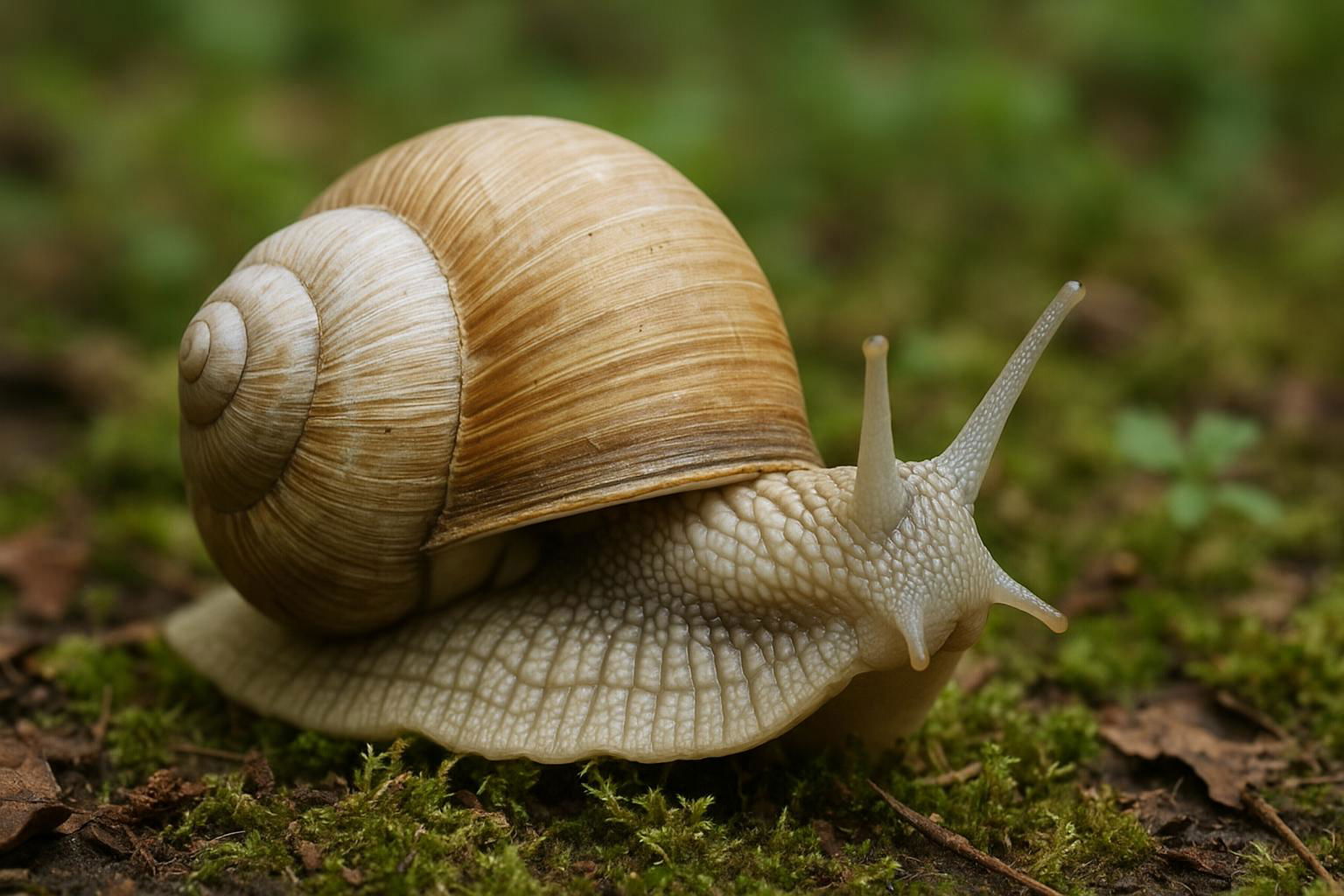
Roman Snail
Helix pomatia
The Roman Snail, scientifically known as Helix pomatia, is a large terrestrial gastropod mollusk native to Europe. It is easily identifiable by its robust, creamy-brown shell, which features a series of spiraled ridges and subtle bands. The shell typically measures up to 5 centimeters in diameter, offering a protective retreat for the snail's soft body. Known for its slow pace, the Roman Snail thrives in humid environments such as gardens, forests, vineyards, and hedgerows, favoring calcareous soils which are rich in calcium carbonate to support its shell development. It is a herbivorous species, primarily feasting on a variety of plant materials and decomposing organic matter. Interestingly, the Roman Snail is renowned for its use in gastronomy, particularly in French cuisine where it is called "escargot." Despite this, it is a protected species in several countries due to habitat destruction and over-harvesting, which have threatened its population. In their natural behavior, these snails are known for breeding in late spring and summer, laying eggs in shallow burrows, with both male and female organs allowing individuals to cross-fertilize. Their role in ecosystems involves decomposing plant material and serving as prey for birds, mammals, and other predators, thus contributing to the ecological balance.
Colors: Brown, Cream, Banded
 All Species & Breeds
All Species & Breeds
 Highland Cattle
Highland Cattle
 Miniature Donkeys
Miniature Donkeys
 All Species Directory
All Species Directory
 Highland Cattle in Virginia
Highland Cattle in Virginia
 Miniature Donkeys in Texas
Miniature Donkeys in Texas












